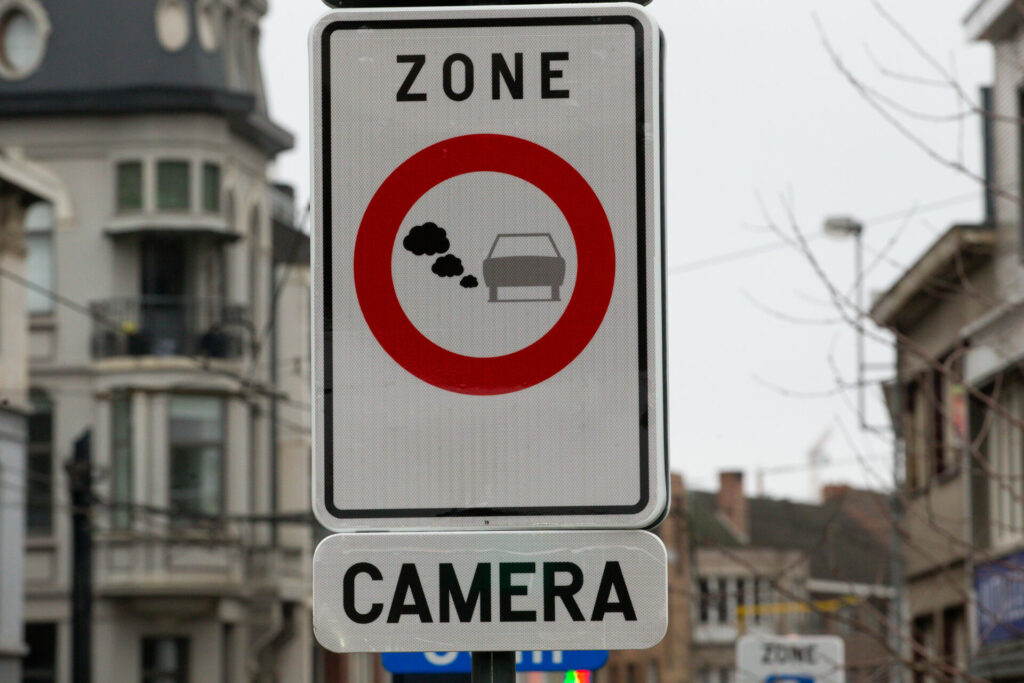For the first time since the diesel scandal in 2015, the European Union is presenting a new standard for the emission of harmful substances from cars. This will probably be the last standard before cars must be completely emission-free in 2035. However, environmental organisations find the standard far too weak, while car manufacturers say it is too strict.
The Euro standards determine how many harmful substances may come out of a car’s exhaust. Think of soot, carbon monoxide and the most important: nitrogen oxides (NOx). These especially are harmful to health, and cars (especially diesels) emit a lot of it. Due to too high concentrations of NOx, 38 thousand people die worldwide every year, according to a highly cited study from a few years ago by the Stockholm Environment Institute.
Cars with a combustion engine that are currently in use are expected to still be on the roads for another 20 years. It is therefore important to make them as clean as possible, which is why the EU introduces a new, stricter standard every so many years. This week the latest one was announced, which is a lot stricter than the previous one.
Related News
- EU proposes new vehicle pollution standards to improve air quality
- Global CO2 emissions to break new records in 2022
- High emissions throw construction sector off-track for decarbonisation
When the plans leaked out, environmental organisations sounded the alarm. “It's as if this standard was written by the car industry,” commented environmental lobby club Transport & Environment (T&E). "Brussels has created its own Dieselgate," they added, referring to the scandal in 2015 in which it turned out that Volkswagen had massively cheated with the emissions of its diesel cars.
"In the coming decade, a hundred million heavily polluting cars will be on the road, because the European Commission has overruled the recommendations of its own experts," concluded the British newspaper The Guardian.
Since the diesel scandal, there has been a lot of attention paid to the European limits on NOx. For example, according to the Euro 6 standard, the one previous to the newly announced one, a diesel car may emit a maximum of 80 milligrams of NOx per kilometre, while a petrol car may emit 60 milligrams. The Euro 7 standard sets the limit for diesel cars at 60 milligrams. The one for petrol cars remains the same: 60. Some complain that this is hardly an improvement.
Bas Eickhout, MEP for the Dutch Green Left, is also disappointed. “We don't understand why, after so many years of cheating, the car industry is getting away with such a weak standard,” he was quoted as saying by RTBF. Cities in particular suffer from this, says Eickhout, because they already have major problems with air quality.
Business-driven push for lower standards
Manufacturers obviously think differently and argued for less stringent standards so that they can put their money into electrification. Eickhout thinks this is nonsense.
So, do environmentalists have a point when they say it is a weak standard?
According to Norbert Ligterink, senior researcher on vehicle emissions at research organisation TNO, it is a no. The way of testing is much more important than the limit that belongs to a standard, he thinks. In the current Euro 6 standard, the test procedure is laid down very precisely. That happened because manufacturers kept trying to deceive the test.
But according to Ligterink, a tightly orchestrated test drive also has disadvantages: you have to accelerate exactly as hard, not drive too fast, but also not too softly, the engine must idle exactly as many seconds. The test consisted of two pages of requirements. "If you didn't meet one, the test was invalid," he told RTBF.
As a result, manufacturers have fewer escape options. Under previous standards, for example, dirty emissions were allowed to be higher when it was cold. These temperature limits have been tightened enormously with the Euro 7 standard. Only in severe cold or scorching heat may the emissions be a factor of 1.6 higher than the limit. In all other situations (almost always) the basic limit value is sacred.
Stricter rules introduced
The rules for a cold start are now also stricter; just after starting, the emissions of a car are the dirtiest and most dirty substances are emitted. After that, the systems are heated up and the emissions are lower. On a ride of one hundred kilometres, three-quarters of the pollution is emitted during the first hundred meters, says Ligterink. Previously, manufacturers were allowed to spread this dirty period over at least sixteen test kilometres. Now that distance has been reduced to ten. The result: cars must be much cleaner after they start.
A better test procedure can make cars much cleaner, even if the limit doesn't get much stricter, Ligterink says. According to him, this also happened earlier. Before the introduction of the Euro 6 standard, diesel-powered vans often emitted 1,000 milligrams of NOx per kilometre. Now it’s 20. New vans are therefore far below the Euro 6 limit, Ligterink emphasises. “Only looking at the limit value is therefore the wrong focus,” he says.
Bas Eickhout disputes this: the responsibility for carrying out the tests lies with national institutes. In the past, they were often inclined to protect their own car industry. Why would they suddenly hold stricter tests, Eickhout wonders. “That's why it would have been better to lower the limit considerably.”

